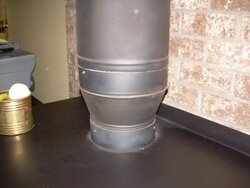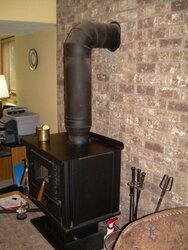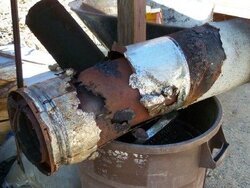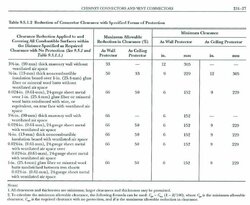Arrow 1800A
Take a look at the pics to visualize. Looks like single wall pipe to me. The manual says for s/w you need 18" to combustibles. Behind the stove is brick, then a small air gap, then drywall. Its 8" to the brick, 4" brick. So overall about 12" to the wall. Does the brick insulate enough to make this legit? Is there a way to figure this out besides just knowing off the top of your head (some formula in a code book)?
Take a look at the pics to visualize. Looks like single wall pipe to me. The manual says for s/w you need 18" to combustibles. Behind the stove is brick, then a small air gap, then drywall. Its 8" to the brick, 4" brick. So overall about 12" to the wall. Does the brick insulate enough to make this legit? Is there a way to figure this out besides just knowing off the top of your head (some formula in a code book)?






